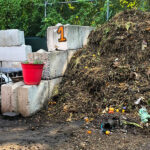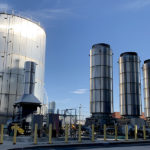Top: Image courtesy U.S. EPA
On June 12, U.S. Secretary of Agriculture (USDA) Thomas Vilsack announced the release of the Biden Administration’s “National Strategy For Reducing Food Loss and Waste and Recycling Organics.” Vilsack made the announcement during his keynote address at the opening of ReFED’s annual Summit in Baltimore, Maryland. The goals of the national strategy, in a nutshell, are to “Prevent the loss and waste of food; increase recycling of food and other organic materials to support a more circular economy for all; reduce greenhouse gas emissions; save households and businesses money; and build cleaner, healthier communities.” The strategy serves as a roadmap to achieve the U.S. goal to reduce food loss and waste by 50% by 2030, adopted in 2015 by the USDA, U.S. Environmental Protection Agency (EPA), and U.S. Food and Drug Administration (FDA). It also will drive progress toward EPA’s nationwide goal of a 50% recycling rate by 2030, and the U.S. Methane Emissions Reduction Action Plan that identified reducing food waste in landfills, which is responsible for 58% of landfill methane emissions released to the atmosphere.
Four objectives are proposed in the National Strategy:
- Prevent food loss
- Prevent food waste
- Increase the recycling rate for all organic waste
- Support policies that incentivize and encourage the prevention of food loss and waste and organics recycling
For each objective, strategic actions are highlighted that EPA, USDA and FDA could take to address the key challenges and build on collaborative stakeholder efforts already underway or planned by these federal agencies to help meet the national goals. “The Strategy is not meant to be comprehensive of all environmentally positive actions possible in this area,” notes the document. “Many programs included have competing priorities and may include food loss and waste as only part of their total funding. Specific actions ultimately adopted will be informed by evidence-based research to the extent available and stakeholder engagement, and implemented through technical and financial assistance, pilots and programs, and policies, where appropriate and subject to funding and resource availability.” The plan is to use the Bipartisan Infrastructure Law’s materials management grants, along with other resources available, to implement actions as appropriate. EPA and USDA are also advancing environmental justice through this Strategy, including the goal that 40% of certain federal investments flow to disadvantaged communities that are marginalized by underinvestment and overburdened by pollution.
Five action steps are in the objective to increase the recycling rate for all organic waste — defined as food, yard and tree trimmings, and other organic (carbon-based) materials in the waste stream:
- Support development of additional organics recycling infrastructure through grants and other assistance for all communities, especially those that are underserved. The actions will support centralized and decentralized (e.g., on-farm or community-scale) organics recycling operations, as well as education and training for community members.
- Expand markets for products made from recycled organic waste. Education, outreach and research on the value and benefits of recycled products such as compost and other beneficial products (e.g., rendered materials) will be supported to help increase the end market for procurement and use of these products by municipalities, state transportation departments, real estate developers, farmers, landscapers and other entities and increase composting of food waste.
- Enhance support to advance decentralized organics recycling (i.e., community-scale, on-farm, and home composting), with emphasis on Tribal communities and communities with environmental justice concerns, allowing all communities to benefit economically and environmentally. Federal resources could be used to provide tools and increase capacity for communities.
- Build, refine, and share tools and data to aid decision-making about infrastructure investments, waste management policies, and waste management pathway destinations (e.g., composting, anaerobic digestion, landfill).
- Address contamination in the organic waste recycling stream. One current limit on organics recycling is the contamination of this waste stream with plastics, persistent chemicals such as per- and polyfluoroalkyl substances (PFAS) and other materials.
Also included in the national strategy are a national, coordinated behavior change campaign that goes beyond awareness to make a noticeable difference on reducing food loss and waste; and to improve food loss and waste data and estimation methodologies.










